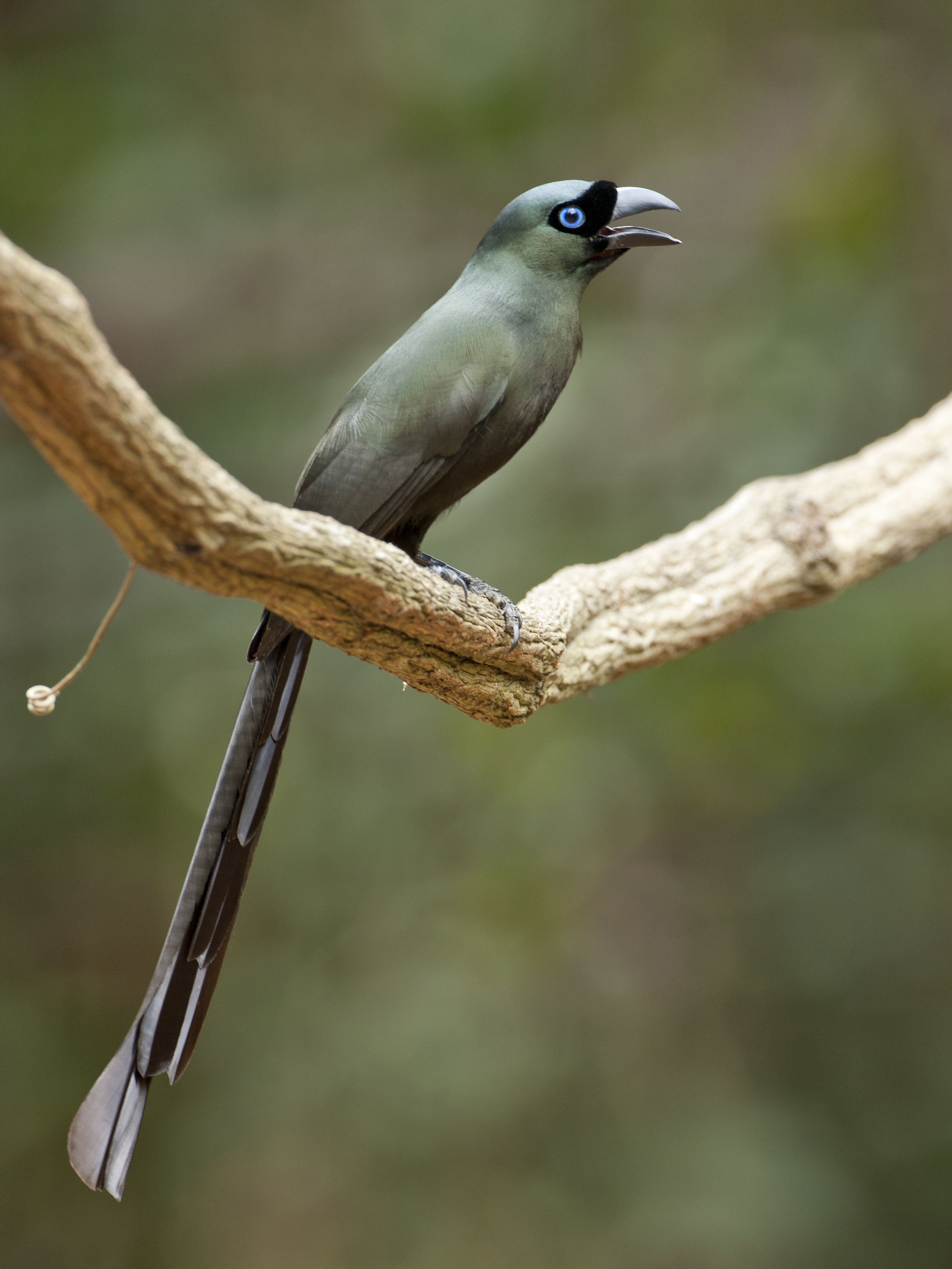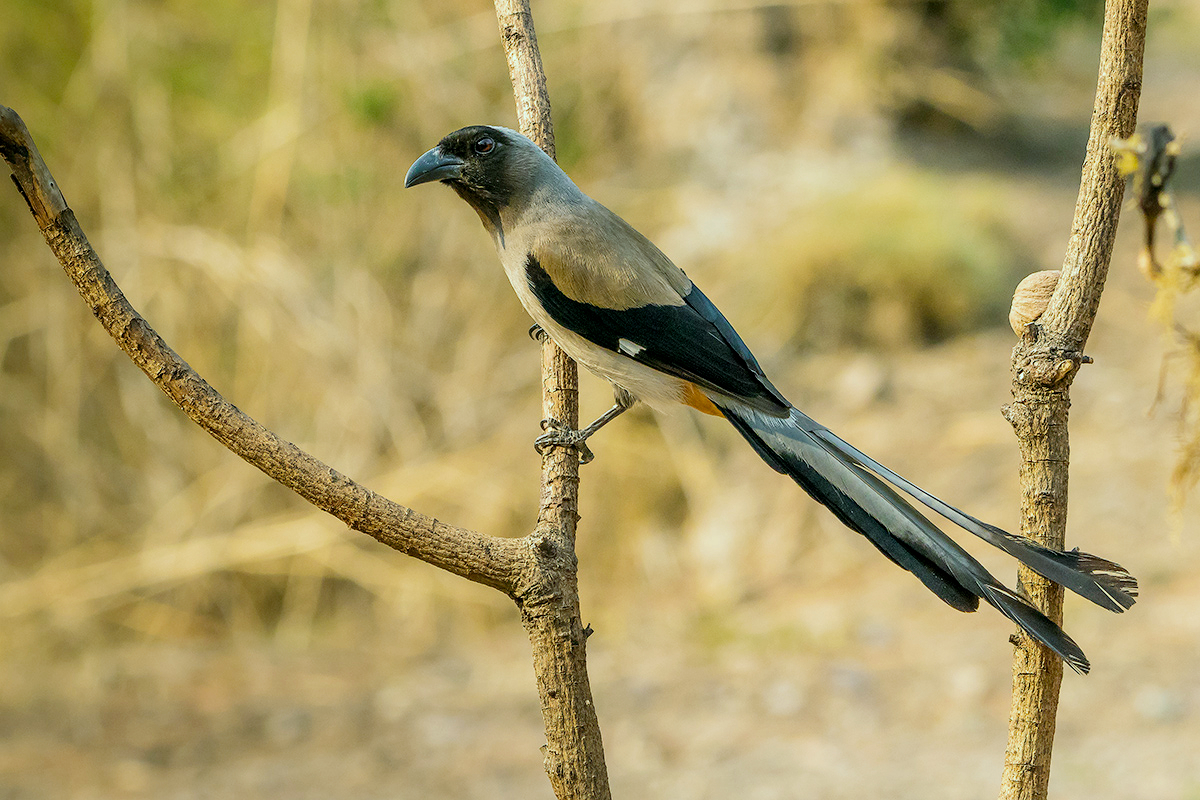|
Crypsirininae
The treepies (known also as crypsirinines from the subfamily's name, Crypsirininae) comprise four closely related genera (''Dendrocitta'', '' Crypsirina'', '' Temnurus'' and '' Platysmurus'') of long-tailed passerine birds in the family Corvidae. There are 12 species of treepie. Some treepies are similar to magpies. Most treepies are black, white, gray or brown. They are found in Southeast Asia Southeast Asia is the geographical United Nations geoscheme for Asia#South-eastern Asia, southeastern region of Asia, consisting of the regions that are situated south of China, east of the Indian subcontinent, and northwest of the Mainland Au .... They live in tropical forests. They are highly arboreal and rarely come to the ground to feed. Species Following Ericson ''et al.'' (2005), the black magpies are placed with the treepies: References * Ericson, Per G. P.; Jansén, Anna-Lee; Johansson, Ulf S. & Ekman, Jan (2005): Inter-generic relationships of the crows, jays, magpies and a ... [...More Info...] [...Related Items...] OR: [Wikipedia] [Google] [Baidu] |
Corvidae
Corvidae is a Cosmopolitan distribution, cosmopolitan Family (biology), family of Songbird, oscine passerine birds that contains the crows, ravens, Rook (bird), rooks, magpies, jackdaws, jays, treepies, choughs, and Nutcracker (bird), nutcrackers. In Colloquialism, colloquial English, they are known as the crow family or corvids. Currently, 139 species are included in this family. The genus ''Corvus'' containing 50 species makes up over a third of the entire family. Corvids (ravens) are the largest passerines. Corvids display remarkable Animal cognition, intelligence for animals of their size, and are among the most Bird intelligence, intelligent birds thus far studied. Specifically, members of the family have demonstrated self-awareness in mirror tests (Eurasian magpies) and Tool use by animals, tool-making ability (e.g. crows and rooks), skills which until recently were thought to be possessed only by humans and a few other mammals. Their total Brain–body mass ratio, brain-to- ... [...More Info...] [...Related Items...] OR: [Wikipedia] [Google] [Baidu] |
Rufous Treepie
The rufous treepie (''Dendrocitta vagabunda'') is a treepie, native to the Indian Subcontinent and adjoining parts of Southeast Asia. It is a member of the crow family, Corvidae. It is long tailed and has loud musical calls making it very conspicuous. It is found commonly in open scrub, agricultural areas, forests as well as urban gardens. Like other corvids it is very adaptable, omnivorous and opportunistic in feeding. Description The sexes are alike and the main colour of the body is cinnamon with a black head and the long graduated tail is bluish grey and is tipped in black. The wing has a white patch. The only confusable species is the grey treepie which however lacks the bright rufous mantle. The bill is stout with a hooked tip. The underparts and lower back are a warm tawny-brown to orange-brown in colour with white wing coverts and black primaries. The bill, legs and feet are black. The widespread populations show variations and several subspecies are recognized. The nom ... [...More Info...] [...Related Items...] OR: [Wikipedia] [Google] [Baidu] |
Andaman Treepie
The Andaman treepie (''Dendrocitta bayleii'') is a species of bird in the family Corvidae. First described by Robert Christopher Tytler in 1863, it is endemic to the Andaman Islands of India, where its natural habitat is subtropical or tropical moist lowland forests. It is threatened by habitat loss Habitat destruction (also termed habitat loss or habitat reduction) occurs when a natural habitat is no longer able to support its native species. The organisms once living there have either moved elsewhere, or are dead, leading to a decrease .... The scientific name commemorates the Anglo-Indian statesman Edward Clive Bayley. References Andaman treepie Birds of the Andaman Islands Andaman treepie Andaman treepie Taxonomy articles created by Polbot Taxobox binomials not recognized by IUCN Endemic birds of India {{Corvidae-stub ... [...More Info...] [...Related Items...] OR: [Wikipedia] [Google] [Baidu] |
Temnurus Temnurus
The ratchet-tailed treepie (''Temnurus temnurus'') is a species of bird in the crow and jay family Corvidae. The species is also known as the notch-tailed treepie. It is monotypic within the genus ''Temnurus''. The species has a disjunct distribution in Southeast Asia and China. One population is found in southern Thailand, another in southern Vietnam, another in central and northern Vietnam and Laos, and the last in Hainan in China. Its natural habitat is tropical moist broadleaf evergreen lowland forest A forest is an ecosystem characterized by a dense ecological community, community of trees. Hundreds of definitions of forest are used throughout the world, incorporating factors such as tree density, tree height, land use, legal standing, ...s, and secondary forest and scrubland. References ratchet-tailed treepie Birds of Hainan Birds of Laos Birds of Vietnam ratchet-tailed treepie Taxonomy articles created by Polbot {{Corvidae-stub ... [...More Info...] [...Related Items...] OR: [Wikipedia] [Google] [Baidu] |
Bornean Black Magpie
The Bornean black magpie (''Platysmurus aterrimus''), also known as the black crested magpie, is a treepie in the family Corvidae. It is endemic to the Southeast Asian island of Borneo. Taxonomy The Bornean black magpie was formerly considered a distinctive subspecies of the black magpie, but more recent revisions now consider it a full species, ''Platysmurus aterrimus''. Description The magpie is about 43 cm in length. It has all-black plumage with a long, broad and graduated tail, a stout black bill, a tall, bristly crest, black legs and feet, and red irises. It has a taller crest than, and lacks the white wing patch of, the nominate subspecies. Behaviour The magpie is a garrulous and sociable bird, often seen in family parties. It has a variety of whistling and chattering calls and is also a vocal mimic. It flies with shallow wing beats that produce a distinctive low throbbing ''whoo'' or ''boobooboo'' sound. Breeding A nest found in the Tabin Wildlife Reserve in Se ... [...More Info...] [...Related Items...] OR: [Wikipedia] [Google] [Baidu] |
Malayan Black Magpie
The Malayan black magpie (''Platysmurus leucopterus'') is a species of bird in the family Corvidae. Despite its name, it is neither a magpie nor, as was long believed, a jay, but a treepie. Treepies are a distinct group of corvids externally similar to magpies. Distribution and habitat It is found in Brunei, Indonesia, Malaysia, Myanmar, Singapore, and Thailand. The Bornean black magpie (''P. atterimus'') was formerly considered a subspecies. The natural habitats of the Malayan black magpie are subtropical or tropical moist lowland forest and subtropical or tropical mangrove forest. It is threatened by habitat loss Habitat destruction (also termed habitat loss or habitat reduction) occurs when a natural habitat is no longer able to support its native species. The organisms once living there have either moved elsewhere, or are dead, leading to a decrease .... References Cited texts * Platysmurus Birds of Malesia Malayan black magpie Taxonomy articles created ... [...More Info...] [...Related Items...] OR: [Wikipedia] [Google] [Baidu] |
Sumatran Treepie
The Sumatran treepie or Sunda treepie (''Dendrocitta occipitalis'') is a species of bird in the family Corvidae. It is endemic to the island of Sumatra in Indonesia. Its natural habitats are subtropical or tropical moist lowland forest and subtropical or tropical moist montane forest. The Bornean treepie (''D. cinerascens'') is sometimes considered to be a subspecies In Taxonomy (biology), biological classification, subspecies (: subspecies) is a rank below species, used for populations that live in different areas and vary in size, shape, or other physical characteristics (Morphology (biology), morpholog ... of this bird. References Sumatran treepie Birds of Sumatra Sumatran treepie Taxonomy articles created by Polbot Taxa named by Salomon Müller {{Corvidae-stub ... [...More Info...] [...Related Items...] OR: [Wikipedia] [Google] [Baidu] |
White-bellied Treepie
The white-bellied treepie (''Dendrocitta leucogastra'') is a bird of the crow family endemic to the forests of southern India. They overlap in distribution in some areas with the rufous treepie but are easy to tell apart both from appearance and call. Description The white of the head and body makes it easy to distinguish from the sympatric rufous treepie. This tends to be found in more dense forest and is less associated with human habitation than the rufous treepie. The white-bellied treepie is long. The back of the neck is white, and the throat and breast are black. The thighs are black, and the undertail coverts are chestnut. The rest of the underparts is white. The back is chestnut-brown. The wings are black and have a white patch. The rump is white. Two-thirds of the two central tail feathers are silver-grey, and the terminal third is black. The other tail feathers are black. The beak is black, and the legs are greyish-black. Distribution It is found in the forests o ... [...More Info...] [...Related Items...] OR: [Wikipedia] [Google] [Baidu] |
Collared Treepie
The collared treepie (''Dendrocitta frontalis''), also known as black-faced treepie or black-browed treepie, is an Asian treepie, a small perching bird of the crow family, Corvidae. This bird is slightly smaller than a blue jay and has the typical compact body and long tail of this group. The forehead, face and bib are black with the chest, neck and shoulders a light silvery or bluish-grey in color. The back is a warm chestnut brown with similar underparts. The wing coverts are white with the primaries and tail black. It inhabits a broad band (though often very localized) from the north eastern Indian Himalayas, Bangladesh, Nepal and across into Burma (Myanmar) in hill forests often at quite high elevations. It feeds mainly on invertebrates of various types, and hawks for termites in flight; it also eats fruits and berries. It probably takes similar overall food types as the other treepies. The nest is a small, neat structure often placed in bamboo Bamboos are a diverse g ... [...More Info...] [...Related Items...] OR: [Wikipedia] [Google] [Baidu] |
Grey Treepie
The grey treepie (''Dendrocitta formosae''), also known as the Himalayan treepie, is an Asian treepie, a medium-sized and long-tailed member of the crow family. The species was first described by Robert Swinhoe in 1863. They are widely distributed along the foothills of the Himalayas in the Indian Subcontinent and extending into Indochina, Nepal, southern mainland China and Taiwan. The populations vary in plumage and several are named as subspecies. Grey treepies are omnivorous birds mostly thriving among dense foliage and in forests. They sometimes take part in mixed species flocks with laughingthrushes, especially the white-throated laughingthrush. They systematically work together through the hill forests, rhododendrons, oaks and other broad-leaved trees, especially in the mornings. Description The grey treepie is long and weighs . It is the same size as other ''Dendrocitta'' species and is separated from them by the overall grey colour of the body. The races in the ... [...More Info...] [...Related Items...] OR: [Wikipedia] [Google] [Baidu] |
Bornean Treepie
The Bornean treepie (''Dendrocitta cinerascens'') is a passerine bird belonging to the treepies genus, ''Dendrocitta'', of in the crow family, Corvidae. It is endemic to the island of Borneo. It is sometimes treated as a subspecies of the Sumatran treepie (''D. occipitalis''). Description It is a fairly large bird, 40 centimetres in length, including a long graduated tail, broad rounded wings and short weak legs. The underparts are pinkish-brown. The head is also pinkish-brown with a pale silver crown and a dark stripe over the eye and across the forehead. The back is greyish and the rump is pale. The wings are black with a white patch and the tail is grey with black tips to the feathers. The bill and legs are grey-black and the eyes are reddish. The Sumatran treepie differs in having a pale brown back, a dark brown head with a white nape and a thinner bill. The Bornean treepie is a noisy bird with a variety of loud, explosive calls including a bell-like whistle and various gru ... [...More Info...] [...Related Items...] OR: [Wikipedia] [Google] [Baidu] |


